Orihuela is a city carved out of palm trees and orchards where wandering roosters roam. Of Arab walls and ancient libraries. From the breeze of a sea that is not far, but not close either. But if there is an aspect that defines the soul of This city in the Vega Baja of Alicante is its 'village wind', that breeze loaded with Hernandian verses.
Born on October 30, 1910 at 72 San Juan Street, Miguel Hernández made Orihuela his main inspiration . A young goatherd with great aptitudes for study and whom an obtuse father threw into the goods and evils of a land that would end up being an ally of the universal work that we all know today.
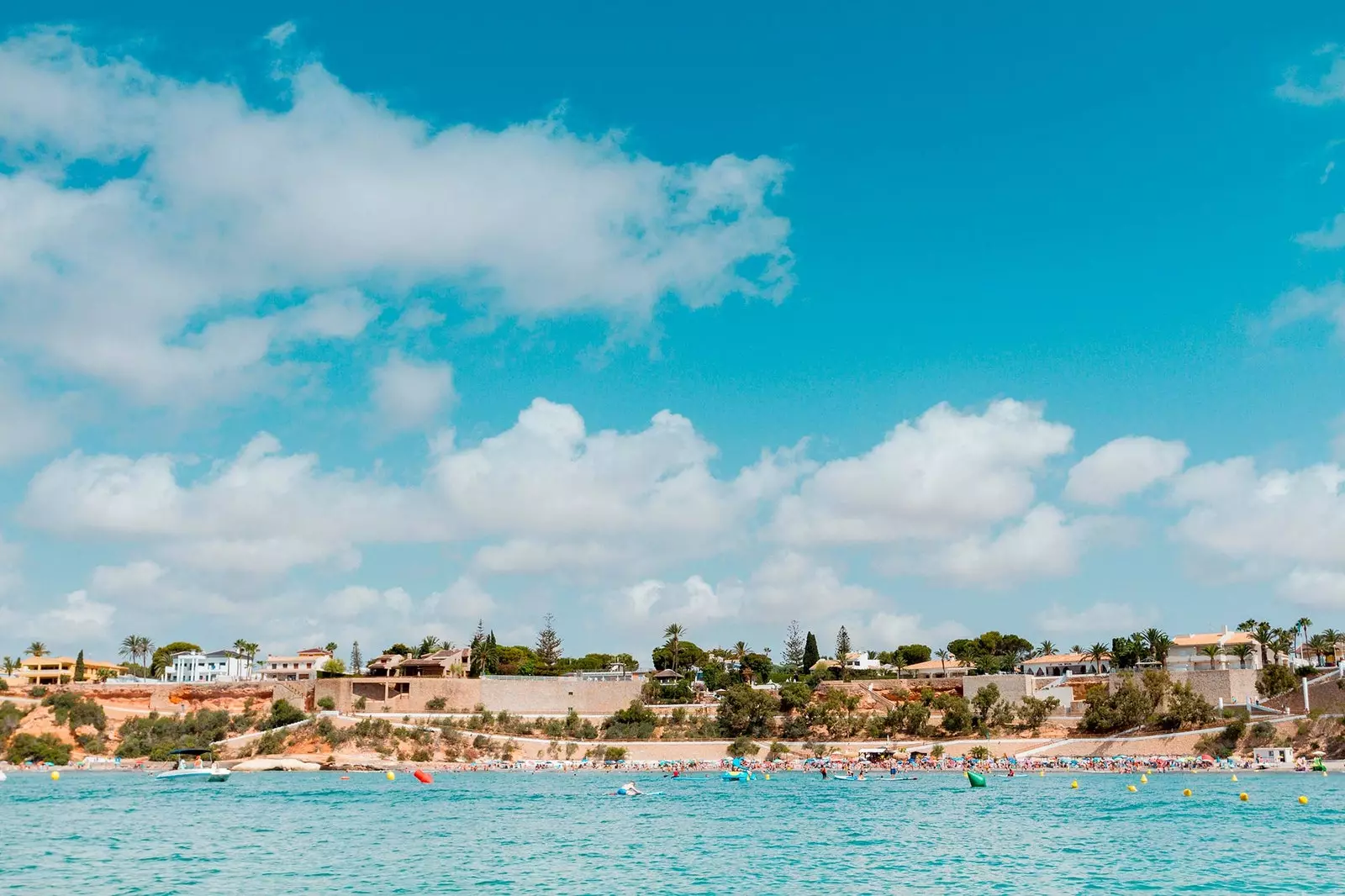
Orihuela, Costa Blanca.
Exploring Orihuela means deciphering the presence of Hernandez, his life and his influences in every street and corner like the best riddle. Like a visit that is savored like an eternal poem.
The fig trees in the back room
My flesh, against the trunk,
seizes, in the siesta of the day
of life, of the weight of the fig tree,
so much!, that one would say, when divorcing them,
which is my meat.
(Excerpt from HUERTO-mio)
The gongorismo that nurtured the first stage of the poetry of Miguel Hernández throws different interpretations of all elements present during any visit Orihuela, from the weathervanes of their houses to the waterwheels of the orchard.
In the city of Alicante, its tour guides evoke the presence of the poet in the form of verses that are recited in strategic places; through an environment that leads us to rethink if we continue in the 21st century.
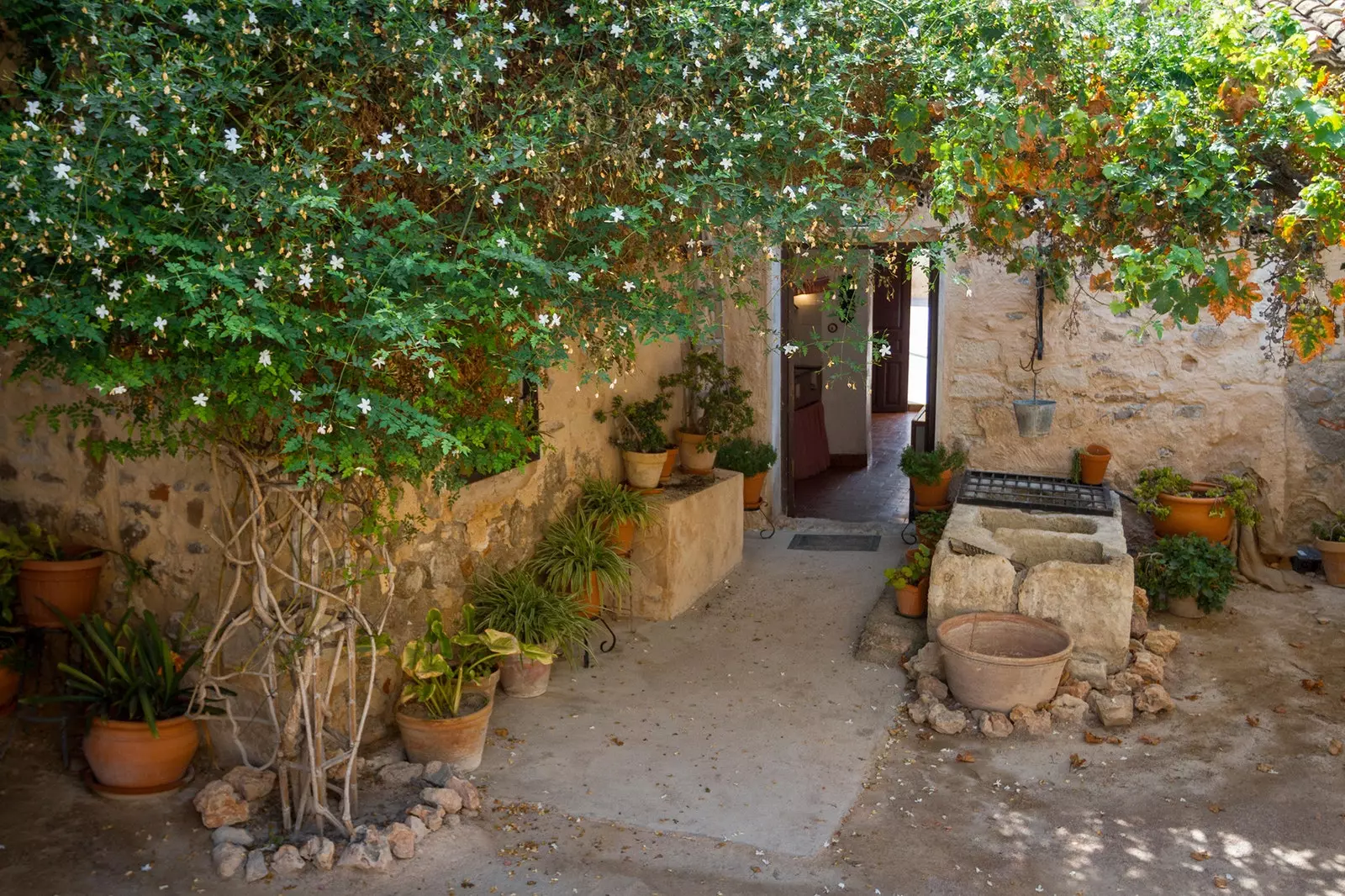
Courtyard of the house of Miguel Hernández, in Orihuela.
The first starting point of the Orihuela hernandiana route is number 72 of San Juan street , accessible only from the outside at the moment. At the age of four, Miguel Hernández would move with his parents and siblings to the nearby Up Street , located in a neighborhood of pastel-colored houses where workers and prosperous merchants coexisted.
Yellow and whispering, the house where the poet lived his childhood embraces a backdrop of orchards and mountains on whose crest the presence of the Orihuela castle can be guessed. The house-museum of Miguel Hernández shows off furniture that reveals the agricultural style of the time , with its baskets of pomegranates and beds of wool mattresses, leading to an outside garden protected by a blue fence.
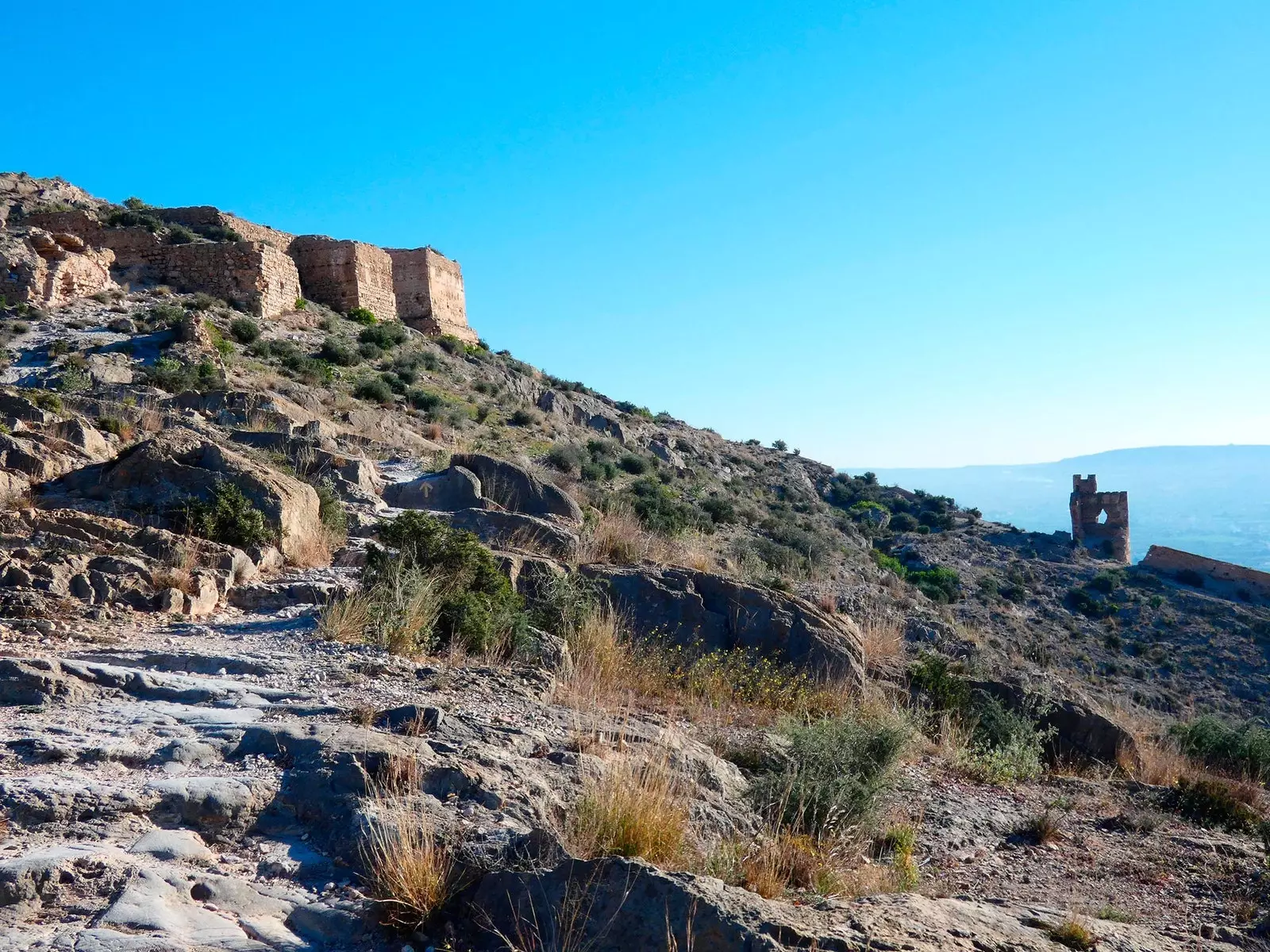
Orihuela Castle.
In the background the goats grazed and through a secret corridor the greens of the little paradise can be guessed. The huge fig trees they cover the oasis where a young Miguel sat down to write to describe the changing nature. A back room that reveals the core of a creative hurricane, of that universe of desert sandals, ovens and moons, of ballads of youth and the mud that Miguel once compared to loving suffering.
NIGHTS OF TAHONA
Up Street! So dense with humanity during the reign of the day, so high with spirituality – that a crystalline bell from Santo Domingo signs at dawn – when the stars crown you: to Ramón Sijé, small, dark, restless, who came to love you because in you his heart loved, death jealously took him away. To Miguel Hernández, who was a living reflection of you, in his life and poetry; that he carried you in his heart and the memory of his influence, of his adolescence and of his tremendous and fertile youth, he violently took him to death. To Josefina, the eternal girlfriend of Ramón Sijé, the fortune of her love came to look for her and took her, life.
And we are left alone, you and me, Upstairs street... And today when so many ashen birds peck at my heart, I have to kiss you.
(Text by Carlos Fenoll, a friend of Miguel Hernández, referring to the nights at the bakery on Calle de Arriba and published in the magazine Estilo de Elche in 1947)
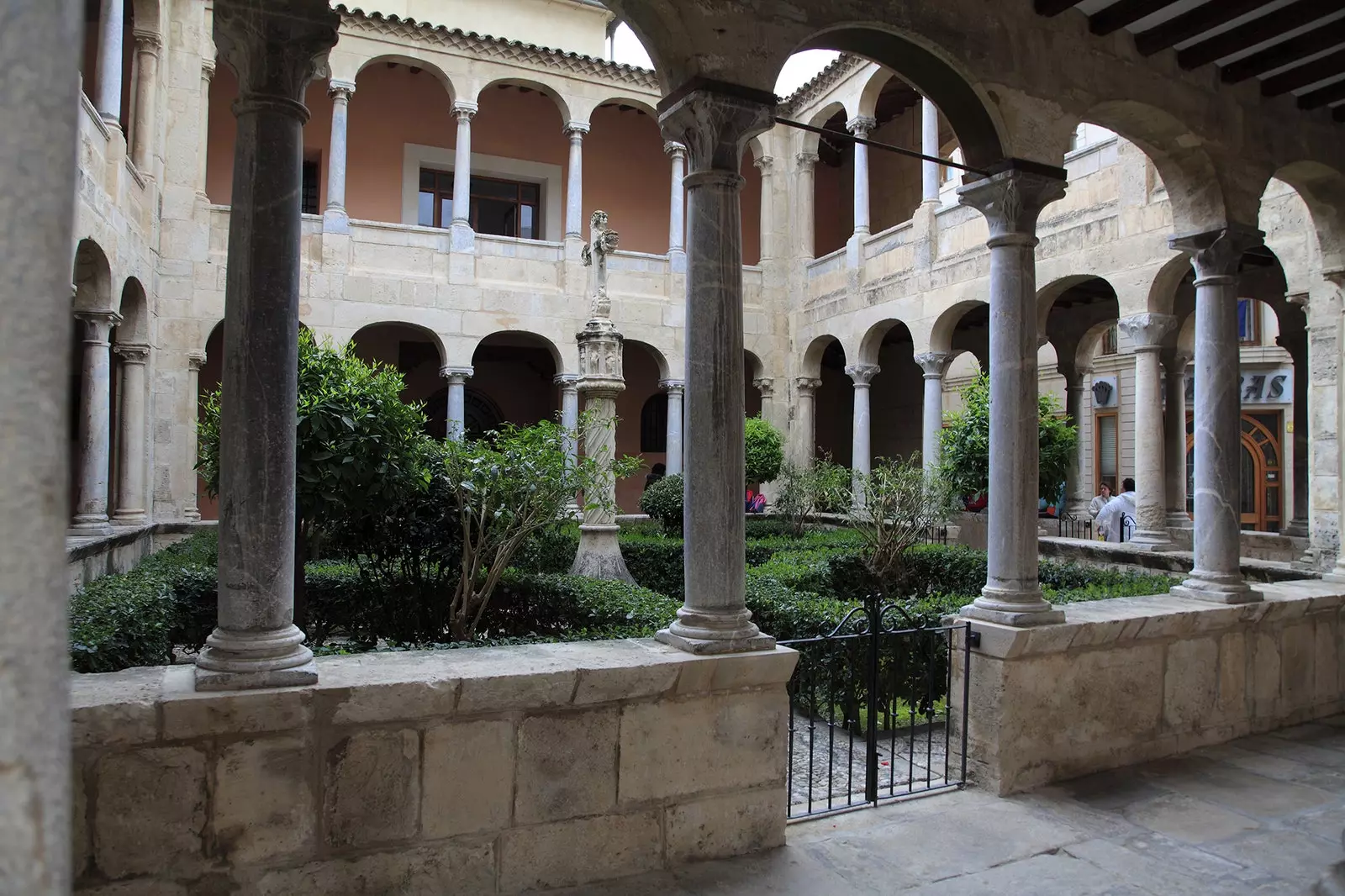
Cloister of the cathedral of Orihuela.
After visiting the house-museum of Miguel Hernández, the decisive places to understand his life are the Calle de Arriba and the Diocesan College of Santo Domingo , where the young man studied until he was 15 years old and met Ramon Sijé, a great friend and cultural activist, in 1929.
Also known as the "Escorial of Levante" , this Dominican college founded by Cardinal Loazes in 1546 is divided into a convent, a college and a former university, highlighting its precious cloister and its library, the first considered public in all of Spain.
Despite the insistence of his teachers to his father, Miguel Hernández was devoted to farm work, but he would also establish relationships with other young people with great creative aspirations such as Sijé or the poet Carlos Fenoll , son of a baker whose bakery on Calle de Arriba would become the epicenter of his nightly gatherings. Today this corner is a supermarket, but there is no time travel that resists the power of a recital.
The visit extends along this nostalgic street to the Plaza de Miguel (former Plaza de Ramón Sijé) , where the famous manifesto that mutated into the Elegy was read and one of the most iconic photos of Miguel Hernández was taken. A few meters away we also find the location of the private library of the priest Luis Almarcha , who would lend him the typewriter and the poetry books that he consumed almost clandestinely.
All these people and places fed the work of Miguel Hernández, whose legacy was protected (and hidden) tooth and nail by his widow, Josefina Manresa , until the Transition allowed to vindicate his figure through various artistic initiatives. One of them came with Tribute to the peoples of Spain in May 1976.
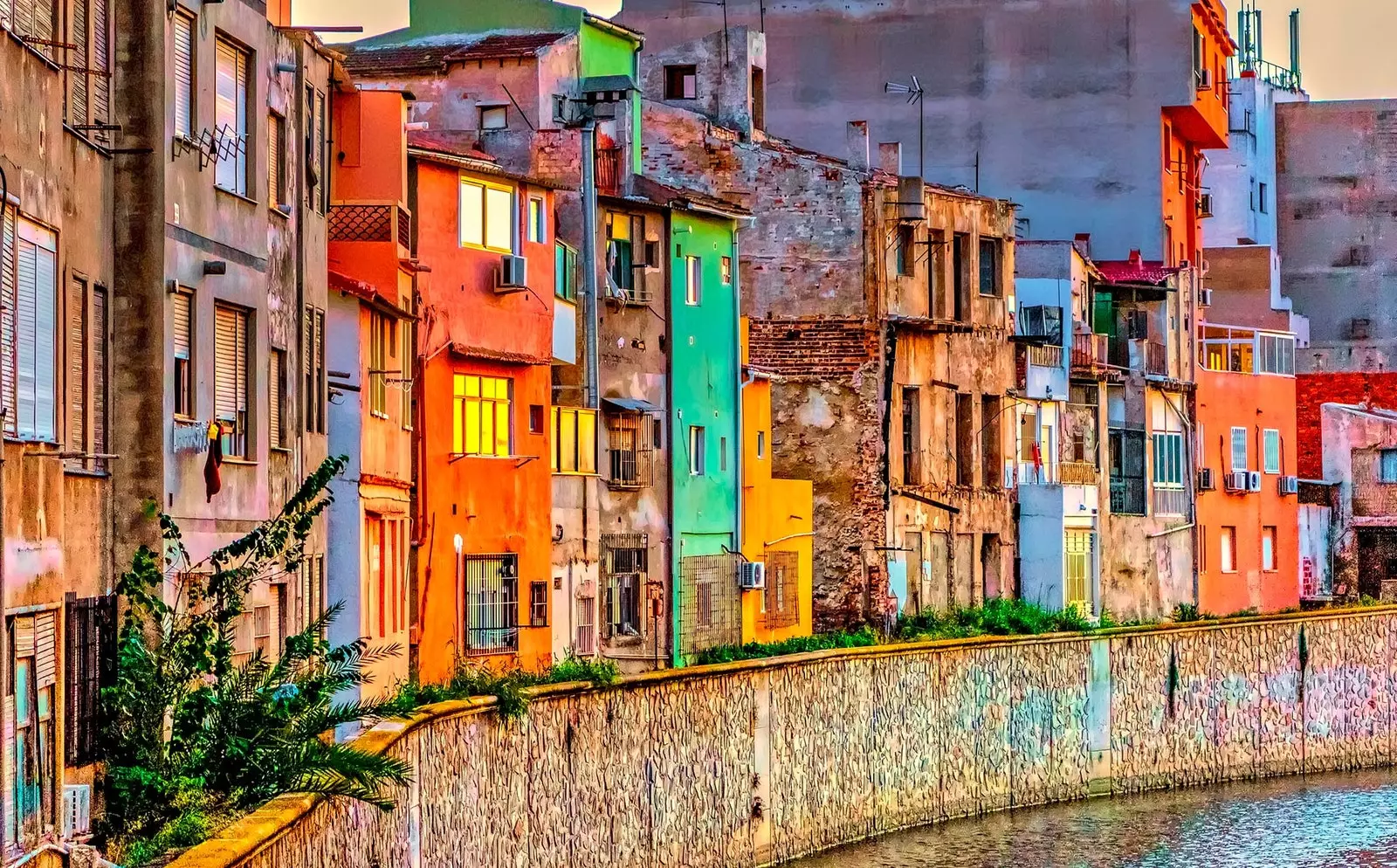
Old town of Orihuela.
This event was a true cultural spring that flourished in the different neighborhoods of Orihuela, including San Isidro , where more than one hundred painters captured their works in 140 facades in honor of Miguel Hernández . Today it is possible to visit this open-air museum where murals with verses by the poet accompanied by illustrations prevail at the foot of the Orihuela mountain range.
ORIHUELA BEYOND MIGUEL HERNÁNDEZ
If you want the enjoyment of such a pleasant vision
That the mind to believe it stubborn resists;
If you want in a lace waterfall
Of color and lights flood the view;
If you want in such wonderful areas
As in those who in dreams the high mind
err
Revolar, in these miraculous verses,
Behold my people
behold my land
(Poem to Orihuela)
Miguel Hernández becomes one of the many excuses to deepen his visit to Orihuela, a city where history, art, gastronomy and beaches merge displaying a thousand-year-old melting pot of Mediterranean influences.
The Church of Santiago evokes the Catalan Gothic that permeates some of the city's main monuments, between whose visits you always want to sit in a restaurant and have a gypsy pot (or explore their bakeries for the best meatloaf).
Afterwards, nothing better than visiting the Orihuela Cathedral , also in Gothic style, and go to the current university to discover the arab walls that flourish in its foundations. in Orihuela cultures overlap and today coexist in harmony unfolding new secrets.
The visit extends to The Palm Grove , where its trees draw those “ringlets on the moon” that inspired Miguel so much, or the mountains that guard the orihuela castle . An overview that reveals why Orihuela is a Mediterranean paradise, but above all a vertical riddle where the breeze is loaded with verses.
Because the life of Miguel Hernández could be read as a great fig tree with leaves in Jaén and in Madrid, in Russia and in Palencia. But only in Orihuela can we sit under the treetop and appreciate its roots.
